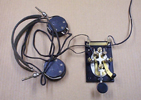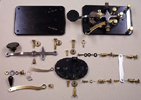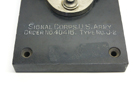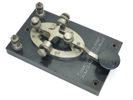During the years between WW I and the Korean War the US Army Signal Corps designated many of their telegraph (or Morse code) keys with a "J" prefix followed by a number. The known numbers range from J-1 to J-51. All of these keys are considered collectible, and many of the WW II models are still in everyday use by Amateur Radio (Ham) Operators. One of the most popular of the "J" keys is the J-38.
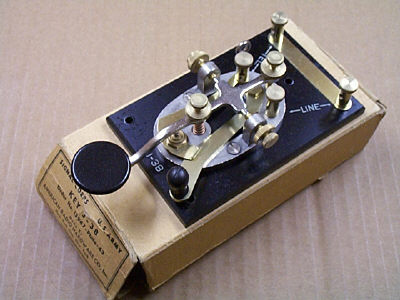
Typical J-38 Key
The J-38 was designed to be used with a Signal Corps radio/telegraph operator training set. The strange looking binding posts and shorting strap at the back of the key were used to connect a set of headphones to one side of the key ("tel") and the other side of the key ("line") to the training set. The effect was to put the key and headphones in series. Click here to see a description of the set up and key circuit and here to see a photo of an army student using the key and phones ---> (from War Department Technical Manual TM 11-432, February 2, 1942).
The circuit closing switch on the right side of the key was used to set the key for listening (switch closed) or sending (switch open). The other odd piece of hardware, a little eye screw on the left side of the key, was used to tie a stay cord or lanyard from the headset leads to the key. Click on the pictures below to see an example.
There are often orange colored numbers and letters stamped on the bottom of J-38's, sometimes inside circles or squares. These stamps were used to indicate that the key had been approved by a Signal Corps inspector. The letters MFP are also sometimes found on J-38's indicating that the key had been treated for mildew and fungus prevention.
